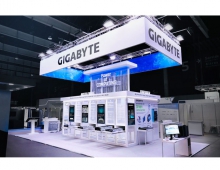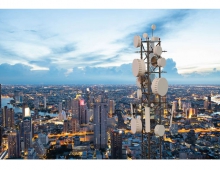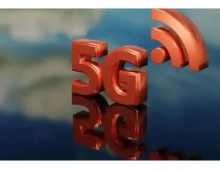
Nokia ReefShark chipsets Deliver Performance Gain in 5G Networks
Nokia has unveiled its new ReefShark chipsets, which reduce the size, cost and power consumption of operators' networks and meet the massive compute and radio requirements of 5G.
Incorporating Nokia Bell Labs artificial intelligence (AI) technologies as well as Nokia's capabilities in antenna development for mobile devices and base stations, ReefShark chipsets leverage silicon developed by Nokia in Oulu, Espoo and Tampere, Finland as well as Sunnyvale, California.
Nokia claims that ReefShark chipsets for radio frequency (RF) units such as the radio used in antennas significantly improve their performance. This results in halving the size of massive MIMO antennas. ReefShark chipsets also reduce power consumption in baseband units by 64%, compared to such units in use today, according to the company.
The ReefShark chipsets for compute capacity are delivered as plug-in units for the commercially available Nokia AirScale baseband module. AirScale is software upgradeable to full 5G functionality, and these plug-in units triple throughput from Nokia's 28 Gbps today, to up to 84 Gbps per module. Additionally, AirScale baseband module chaining supports base station throughputs of up to 6 terabits per second.
AI in 5G networks enables real-time radio monitoring and optimization and the ability to apply techniques such as network slicing to meet the service level demands of new business cases. Nokia is developing technology with common interfaces and toolkits allowing service providers to implement machine learning applications in their networks.
Nokia says it is working with 30 operators using ReefShark and will ramp up field deployments during the third quarter of 2018.
Nokia's Future X architecture for 5G
Nokia also today outlined the scope of its Future X architecture for 5G, the basis for its new reference silicon design and the foundation of its 5G technology and services portfolio.
This portfolio - to be showcased at Mobile World Congress in Barcelona next month - comprises an end-to-end network that delivers up to three times more data capacity per cell site and 30% lower total cost of operation through artificial intelligence-based automation.
The 5G Future X network is one that scales efficiently to cope with the traffic and constant creation of new services and applications assigned to network 'slices'. Nokia 5G core solutions, such as Cloud Packet Core, combine cloud-native architecture concepts such as network function software disaggregation, stateless functional software elements with 'state-efficient' processing and a shared data layer, with automated cloud networking and dynamic lifecycle management.
Automation is key to realizing the full operating potential of 5G and dealing with the massive number of network connections. Nokia's advances in artificial intelligence and machine learning throughout the network to radio cell sites, wherever they are located, improve both performance and operations.
The Nokia 5G Future X portfolio outlined:
- Nokia 5G New Radio - the radio software, based on the 3GPP 5G New Radio Release 15 standard.
- Nokia AirScale Radio Access - a modular way to build radio access networks delivering services with virtually unlimited capacity, scaling and leading latency and connectivity. In 2018 Nokia will introduce over 20 new products and features with software-upgradeable radios, including ReefShark-based products, and the smallest-ever outdoor AirScale system module.
- Nokia's 5G AirScale active antennas - ideal for meeting the needs for 5G applications that require mobility support, wide-area coverage, multi-gigabit throughput speeds and millisecond latency. New antenna products include AirScale massive MIMO Adaptive Antennas for 5G and LTE, a portfolio of new 5G ready radio heads, as well as a new dual-band Compact Active Antenna addressing all operator deployment scenarios.
- Nokia's 5G Small Cells - extending Nokia's LTE based small cells portfolio , the new 5G outdoor and indoor small cells are compact and easily deployable and complement the 5G macro network.
- Nokia 5G Anyhaul - the portfolio is expanded for the 5G era with enhanced SDN automation capabilities and products for Microwave, IP Routing, Optical Networking, and Next Gen PON, all supporting the migration of radio access and packet core functions to cloud architectures.
- Nokia 5G Core - Nokia cloud-native packet core supports separated control and user planes and offers both virtualized and new physical deployment capabilities, including platforms built with Nokia's FP4 processor.
- Nokia Massive Scale Access - complements 5G New Radio with fiber, DSL, cable and Wireless PON solutions.





















